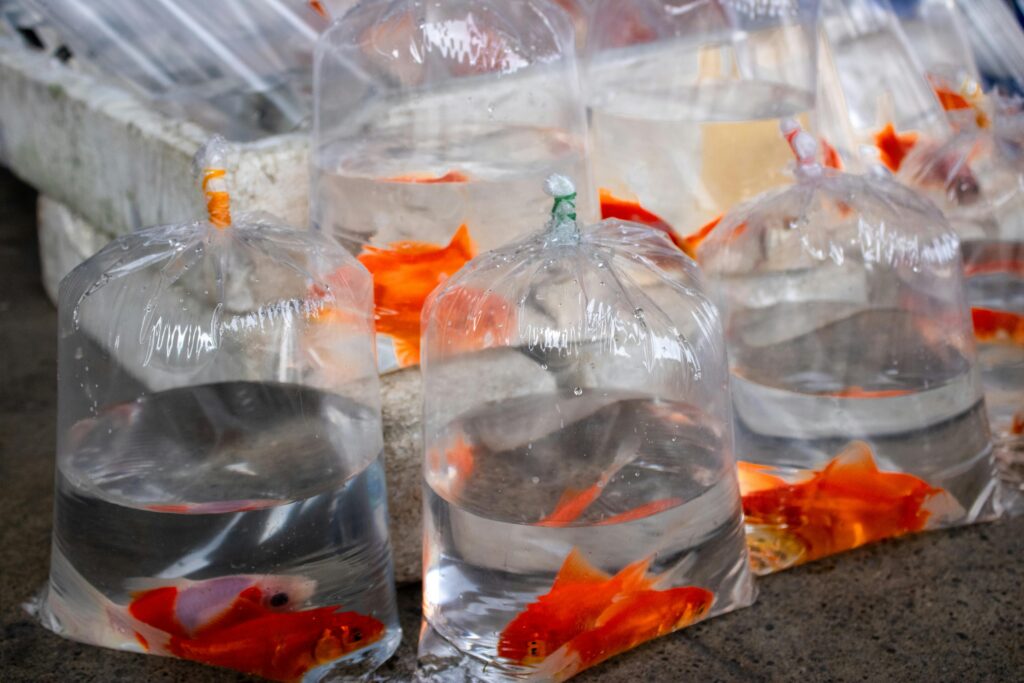Starting with keeping pet fish can be a leisurely and satisfying hobby. Fish’s striking hues and graceful movements provide a peaceful environment fit for any style of living space. Starting off, meanwhile, could be scary considering the variety of species, tank layouts, and care considerations. This large book aims to provide all the information needed for inexperienced fish enthusiasts to start their road into fishkeeping with success.
Choosing the Right Fish
When first starting out, selecting fish known for their simplicity of care and resilience is quite important. Among several excellent starting fish are:
1. Betta Fish: Popular choice due to its low maintenance requirements and beautiful colours is betta fish. Small tanks will enable them to thrive; aeration is not required.
2. Goldfish: Though most of the time housed in bowls, goldfish flourish in larger tanks with suitable filtration. Proper maintenance helps them to be hardy and able to live for several years.
3. Guppies: Little, brilliant fish that are easy to manage for guppies are breedable. They can survive a range of water conditions and fit in community tanks.
4. Neon Tetras: Quiet and minimal maintenance in a communal tank are Neon Tetras, distinguished by their striking blue and red stripes.
5. Zebra Danios: Starting beginners would find Zebra Danios to be ideal as they are lively, schooling fish with great resilience and ability to withstand a range of water conditions.
Advice on Choosing Fish
Research the specific needs and behaviours of the fish you are thinking about before you purchase. Make sure they cooperate if you plan a community tank. Steer clear of overcrowding; one usually makes blunders adding too many fish at once. Start a few and steadily increase as your experience and confidence grow. Purchases from reputable pet stores or breeders will help to ensure fish are healthy and free of diseases.

Your fish’s welfare and health mostly rely on proper tank design. Here is a thorough starting road map:
Since maintaining constant water conditions is easier, beginners should preferably have a larger tank—at least 20 gallons. Smaller tanks alter temperature and water quality more quickly.Select a reasonably good quality filter to keep the water clean and oxygenated. Imagine a filter with easily maintained simple flow rates and adjustable capacity. Among the several type of filters are hang-on-back, canister, and sponge ones.
One could choose the substrate to be gravel or sand. Before filling the tank, make sure it is thoroughly rinsed. Apart from its look, the substrate harbours beneficial bacteria helping the nitrogen cycle.
Mix real or synthetic plants and decorations in your design to provide the fish hiding places and natural surroundings. Live plants help to protect water quality by means of nitrate absorption and oxygen generation.
Reproduct a normal day-night cycle using appropriate lighting. This is especially important should live plants abound in your tank. The necessary spectrum for plant development is provided by energy-efficient LED illumination.
Many tropical fish require continuously water temperature between 75 and 80°F (24 to 27°C). Thermometer and heat source Maintaining the proper temperature asks for a consistent heater and thermometer.
7 Guide to Get Your Tank Ready
1. Rinse the tank with water; no soap or chemicals can help you to remove any garbage or dust from it.
2. Apply the uniformly distributed washed substrate to the tank bottom.
Install the thermometer, heater, filter, according manufacturer instructions in the tank.
4. Sort your ornaments and plants inside the aquarium. Make sure the fish have ample of hiding spots.
5. should be filling the tank from dechlorinated water. Using a water conditioner, cut chlorine and chloramine out of tap water.
6. Before introducing fish, the tank has to be cycled to create healthy bacteria that break down hazardous waste products. Several weeks can pass from here. A bacterial start will speed the procedure.
7. Using a test kit, test the water by checking at ammonia, nitrite, nitrate, and pH levels before adding fish.
Water quality
The water quality you keep determines the state of health of your fish.
One should keep an eye on these crucial components:
Before introducing fish, the tank needs to be cycled to produce helpful bacteria that breakdown harmful waste products. One can spend several weeks doing this.
Freshwater fish thrive generally at a pH range between 6.5 and 7.5. Test the water often; change as necessary.
Preserving the water temperature within the recommended range for your fish type is *temperature*.
These chemicals damage fish; hence, their low levels should be maintained: ammonium, nitrite, and nitrate levels. Two absolutely required are partial water changes and frequent water testing.
Ten to twenty percent weekly regular partial water changes will help to preserve the water pure and reduce the poisonous accumulation.

Guideline for Maintenance of Water Quality
1. A water test kit will help you track pH, nitrite, nitrate, and ammonia levels. Minimum once a week, test the water.
2. To remove pollutants and maintain water quality, weekly replace ten to twenty percent of the tank water with dechlorinated water.
3. Rinse the filter media in tank water—not tap water—to remove garbage without wiping off beneficial microorganisms.
4. Breakdown of uneatable food could contaminate the water. Feed your fish just what they can consume in few minutes.
Meal Consumption
Your fish’s lifetime and general state of health depend on a balanced diet.
Consider the following:
Provide a range of upscale flake foods, pellets, freeze-dried and frozen foods. This assures a balanced diet and meets the dietary requirements of your fish. Give your fish exactly what they can consume in a few minutes once or twice a day. Overfeeding results in issues with water quality. Learn just exactly what food your fish species need. Certain fish would require specific types of diet or additional nutrients.
Tips on Feeding Your Fish
See how much your fish eat; then, adjust the amount to suit it. A few minutes later, clear left-overs.
To assure a varied diet and prevent nutritional deficits, rotate several types of food.
Some fish, such as plecos, enjoy blanched vegetables including spinach and zucchini. Make sure the veggies free of pesticides.
Healthcare Maintenance
Maintaining your fish’s health requires constant attention and care.
Here are some ideas: Look for daily signs of disease in your fish include variations in appearance, attitude, or appetite. Good treatment needs early detection.Quarantine recently purchased fish for a few weeks before adding them to prevent illnesses from finding their way into your tank.
Plan regular maintenance including water changes, filter cleaning, and substrate vacuuming if you want the tank habitat healthy.Learn typical fish diseases and their remedies. Early action guarantees the survival of your fish.

Typical Fish Diseases and Remarks:
Look for white specks on the fins and body of the fish to signal Ich (White Spot Disease. Treat and somewhat raise the water temperature with a commercial ich drug to speed the parasite’s life cycle.
Two marks of Fin Rot are frayed or rotting fins. Using antimicrobial medications will help to improve water quality.
Fish suffering with swim bladder disease may find it difficult to float or swim. Cut feeding, especially of dry foods, and provide a diet high in fibre (e.g., peas).
Look on the fish for white, cotton-like growths; these are fungus. Treat with antifungal medications and improve water quality.

Finishing
Starting a fishkeeping hobby, with the right knowledge and setup, can be an interesting and satisfying experience. To create a lively aquatic ecosystem, choose strong fish, arrange your tank correctly, maintain water quality, provide a balanced feed, and be aware about health and upkeep. Good fish keeping!
This comprehensive book provides a good foundation for everyone new to the world of fishkeeping. Remember that lifetime study and patience define success largely. Welcome your visit into the wonderful and quiet world of pet fish!
Lorem ipsum dolor sit amet, consectetur adipiscing elit. Ut elit tellus, luctus nec ullamcorper mattis, pulvinar dapibus leo.



